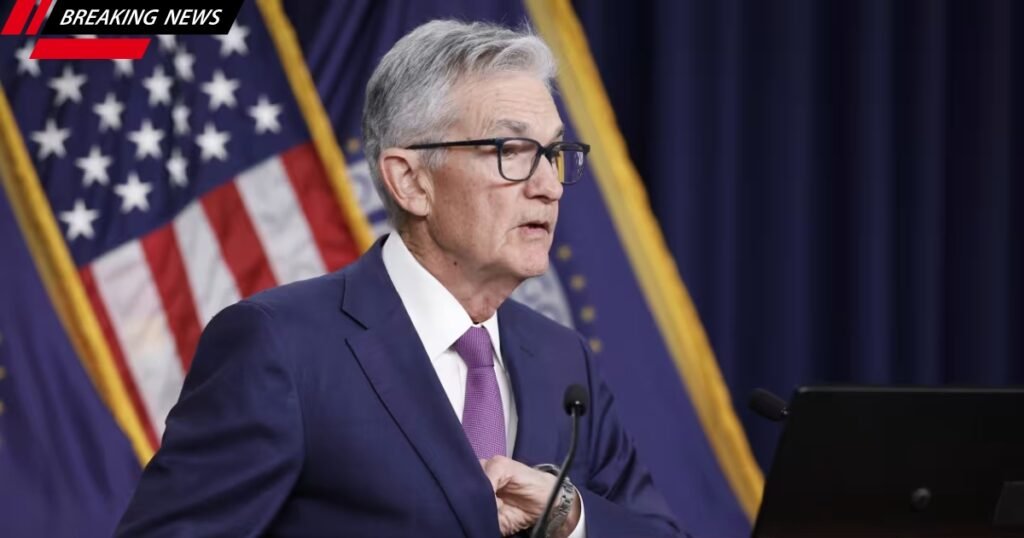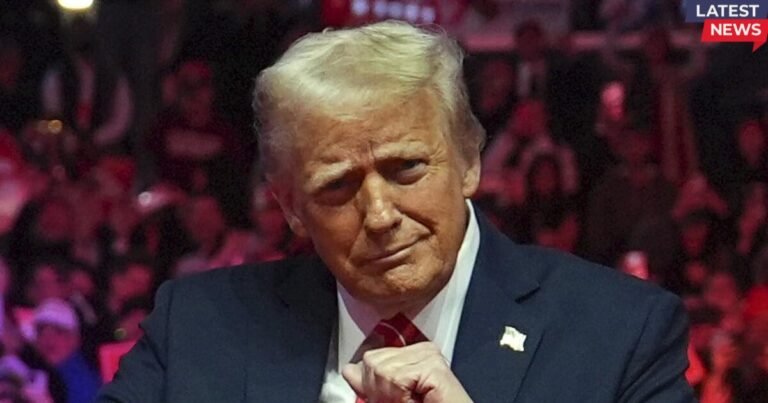
Despite emerging tariff challenges, the Federal Reserve is maintaining silence, delaying rate cuts, and focusing on managing inflation risk rather than supporting the markets and economy. Fed officials have expressed concerns about the potential impact of tariffs on inflation and economic growth, leading to a cautious stance on monetary policy.
Furthermore, tariffs could lead to higher import prices and increased inflation, forcing the Fed to maintain higher rates for longer. Tariffs could also negatively impact economic growth by disrupting investment and trade, resulting in recession. Thus, the uncertainty around tariffs has contributed to market volatility, with investors expressing concerns about the upcoming consequences.
Role of the Fed in Economic Stability
The Federal Reserve plays a crucial role in promoting economic stability by conducting monetary policy to achieve maximum employment and stable prices and supervising and regulating financial institutions. They also ensure the safety and efficiency of the payment systems. The roles that keep the economy stable are:
1. Conducting Monetary Policy
- Dual Mandate: The primary role of the Fed is to implement monetary policy to increase employment opportunities and stable prices. This is often referred to as a “dual mandate.”
- Tools of Monetary Policy: The tools used by the Fed are the fund rate, which is an interest rate when banks lend to each other overnight. The second tool, open market operations, is buying and selling government securities to influence interest rates and overall financial conditions.
- Monetary Policy Goals: The Fed generally aims to maintain a stable inflation rate, currently targeting 2% over the long run, and to promote maximum employment, which is the highest level of employment the economy can sustain while maintaining stable prices.
- Monetary Policy Implementation: The Federal Open Market Committee (FOMC) is responsible for setting monetary policies, and the Board of Governors of the Federal Reserve System is responsible for the discount rate and reserve requirement. These two are the most important monetary policy tools.
2. Promoting Financial System Stability
- Supervision and Regulation: The Fed supervises and regulates financial institutions, including banks, to ensure safety and prevent financial crises.
- Monitoring Risks: The Fed monitors the financial system to find risks and vulnerabilities so that it can take action and resolve them.
3. Fostering Payment and Settlement System Safety
- Services to Banks: The Fed provides services to the banking industries, such as clearing checks and distributing currency.
- Services to the U.S. Government: Services provided to the U.S. Government include maintaining the Treasury Department’s transaction account and issuing and redeeming U.S. government securities.
Why is the Federal Reserve Holding Back?
The Federal Reserve is maintaining a cautious stance during the current wave of tariff-related turmoil. They decided not to opt aggressively and intervene with monetary policy measures like rate cuts or purchasing assets. This restraint stems largely from the Fed’s mandate, which aims to support increased employment and inflation stability. They decided not to counteract trade policies directly made by the executive branch.
Moreover, the Fed acts when there are clear and broad-based threats to financial stability or inflation targets. In this case, policymakers hesitate to respond to geopolitical and fiscal risks because they are beyond their control and might shift rapidly based on diplomatic negotiations.
In 2025, President Donald Trump implemented sweeping tariffs on imported goods from several countries, with rates ranging from 10% to 50%. These implemented tariffs increased the average U.S. tariff rate to 22.5%, the highest since 1909. Since then, economic repercussions have been significant, such as inflation surge, GDP decline, and stock market volatility. Let’s understand what went wrong due to tariff turmoil:
- Inflation Surge: Economists forecast a 2.3% increase in U.S. consumer prices, transforming to an average annual cost of $3,800 per household.
- GDP Decline: Major financial organizations have revised their 2025 economic forecasts downward, with the expectation that the U.S. GDP growth will decrease between 0% to 0.5%, down from previous estimates of 1% to 1.5%.
- Stock Market Volatility: The S&P 500 index fell by 1.8% in March 2025 following the tariff announcements, while the Nasdaq-100 index declined by 2.6%.
Which Sector is at the Most Risk?
Tariff challenges could disrupt trade and increase prices for different sectors. Shipping firms can flag disruption to the global economy, and companies can increase prices or cut investments. The sectors which are at risk are:
- Automobile: New auto tariff of up to 25% duties on imported cars and components, affecting both foreign and domestic countries. Many U.S.-assembled vehicles rely heavily on important parts from Canada, Mexico, Germany, Japan, and South Korea. This disruption resulted in a cost increase from $2,750 to $6,000 per vehicle, depending on the model and origin. Furthermore, international brands such as Honda, Toyota, Hyundai, and BMW face dual pressures due to tariffs on finished vehicles and component imports. Even Tesla, while assembling domestically, is exposed via imported battery components and raw materials.
- Agriculture: The retaliatory tariffs from countries like China, the EU, and Canada directly target U.S. products like soybeans, corn, pork,, and dairy. Soybean exports from China dropped by over 35% in early 2025. Crop prices declined by 12% to 18%, cutting farmer profits. Farm bankruptcies are up 19% year-over-year, according to the USDA.
- Manufacturing: Tariffs on aluminum, steel, machinery, and electronics have increased input costs across the board. The U.S. manufacturers are less competitive internationally due to higher production costs. Some manufacturing companies are relocating production to avoid tariffs altogether.
- Retail: Retailers generally rely heavily on importing goods from China, Mexico, and Southeast Asia, which are all hit with new tariffs. Prices on electronics, clothing, furniture and kitchen goods increased from 10% to 20%. Retailer giants like Target, Walmart, and Best Buy reported slimmer margins and slower sales.
The Ripple Effect of Tariff Tensions on Wall Street
The reintroduction of sheep tariffs by President Trump in 2025 has sent shockwaves across Wall Street, triggering volatility, sector-wide sell-offs, and investor anxiety. The uncertainty surrounding global trade has led to a noticeable shift in investment behavior, with market participants pulling back from risk assets and reallocating to safe-haven investments like Treasury bonds and gold.
The S&P 200 decreased to nearly 6.2% in Q1 2025, marking one of the worst quarterly performances since the pandemic rebound. Meanwhile, the Dow Jones Industrial Average fell 1,800 points in a single week following Trump’s announcement of new tariffs on Chinese and European goods in January.
Sectors most exposed to international trade are automotive, technology, and manufacturing, leading to decline. Technology giants such as NVIDIA and Apple reported not only higher supply chain costs but also forecast weaker earnings, contributing to a tech sector drop of 4.8% over the first quarter.
Conclusion
To sum up, the Federal Reserve faces a complex situation with tariffs leading to policy dilemmas. Increasing inflation and economic slowdown present opposing challenges to its dual mandate of full employment and stable prices.



